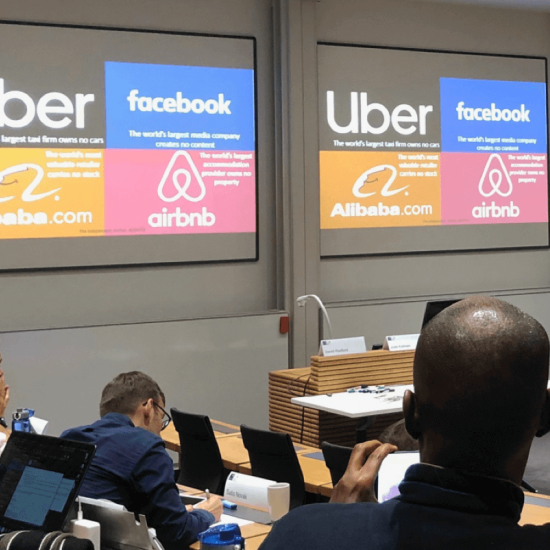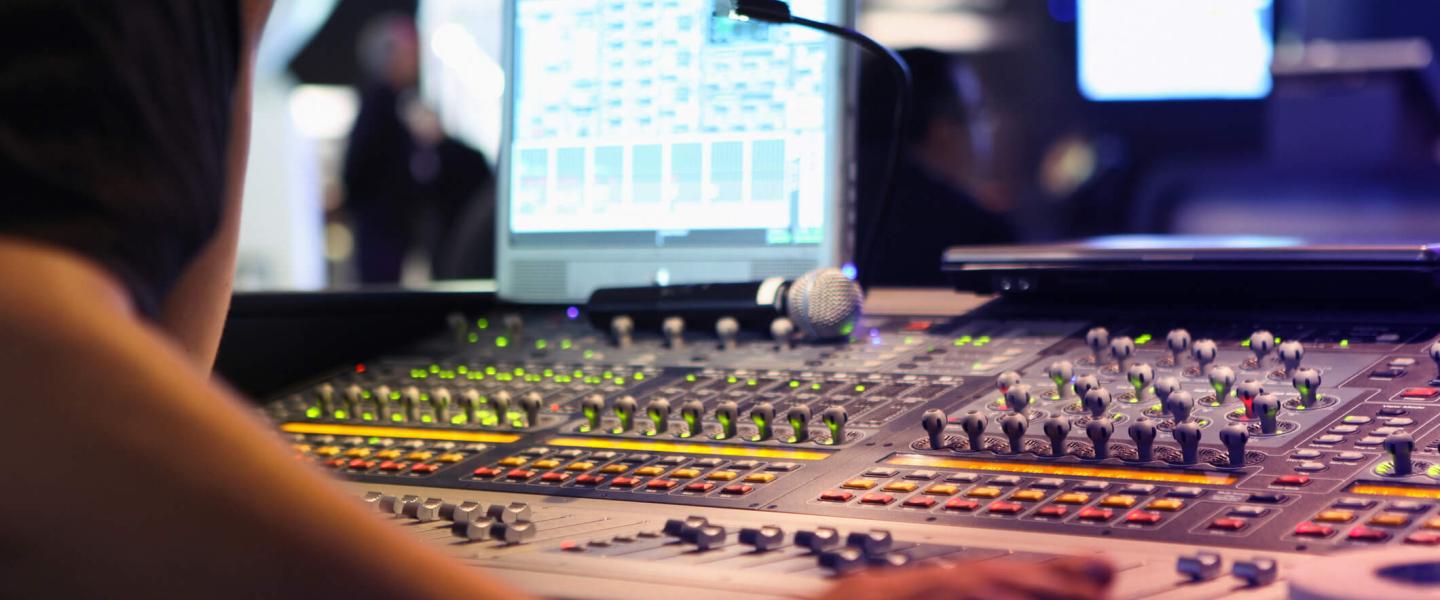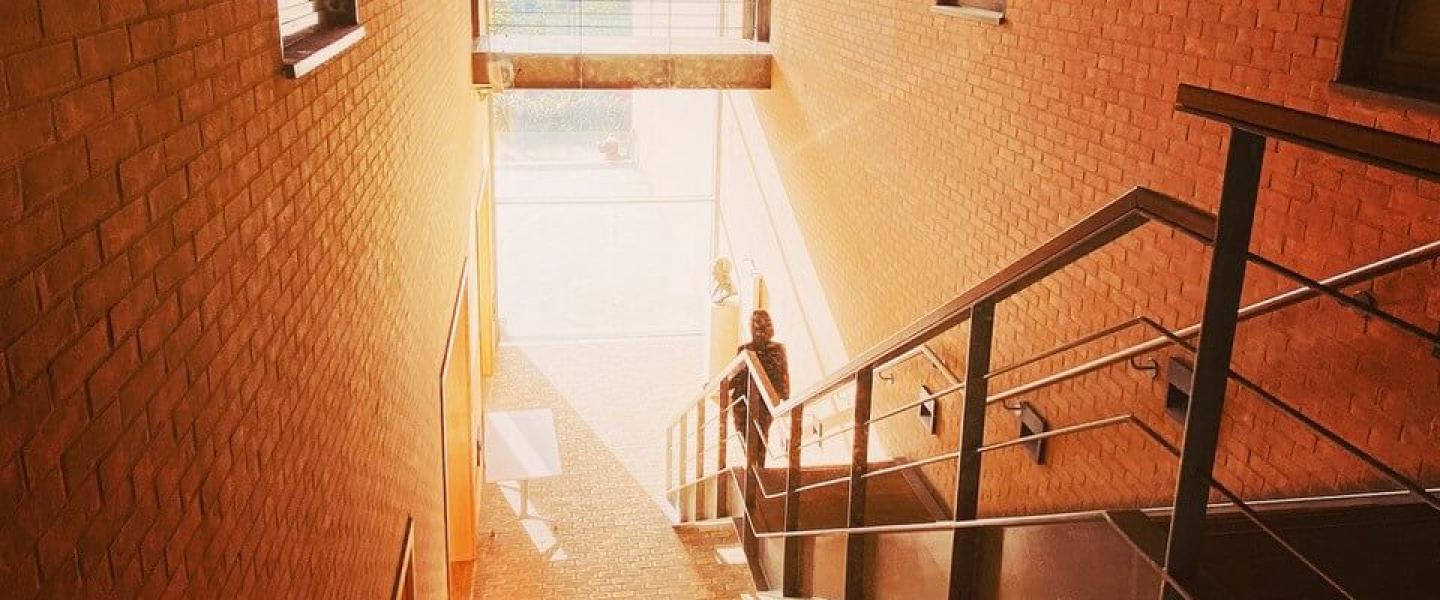We are all relying on new digital communication skills to work from home; but where do these techniques come from and where are they going?
Last week I taught Digital and Social Media Strategy to a class of over 50 participants around the world from Pakistan to the US, via Armenia and Switzerland and many other places, with two Oxford colleagues. At a weekend’s notice, we moved material normally taught in amphitheatres full of lively students keen to exchange ideas and banter into the virtual mosaic of a video conference. In so doing, we became part of a vast, global picture: UNESCO recommended online learning to mitigate school closures. Schools throughout the world are already shifting to Google Classroom, and a background migration to online learning was accelerating anyway.
What’s different about live video teaching

Going online – at first – erects a barrier to the non-verbal communication cues of genuine, first-person interaction. It thwarts the direct, zero-latency dialogue that you get in an MBA amphitheatre, where the discussion and exchange of experiences is at least half of the value. All teaching (especially done well) is at some level about both individual performance (the teacher as charismatic conductor) and choral harmony, and these are challenging to replicate over broadband.
And yet – it clicks into place. The adjustment to two dimensional cues is rapid. The acclimatisation to video a natural fit to a generation raised on Netflix. The dialogue is not unlike the global radio and TV industry, and particularly the management of live studio shows, which I used to work in before teaching at Oxford.
Using the chat room facility alongside the main video feed enables you to create a real-time exchange of ideas not dissimilar to a talk radio station, where you can chip in the thoughts of listeners, who are emailing or texting, to a main guest speaker. You can then bring up contributors on video if you deem their contribution worthy. It’s like BBC Radio 5 Live or LBC when they are working well, and with pictures.
This then offers a multi-faceted teaching space comprising a presentation, a lecturer, videos, audio clips, live video contributors and a chat room. Taken together, that multi-layered interaction is not far off the level of visual resource that you would have in a live television sports show gallery, albeit at lower resolution. It gives an event layer (the class), a graphic layer (the powerpoint and video content) and a commentary layer (the live chat). Teaching as a one-directional lecture almost never works, and this is no exception: using the two-way channel brings it to life and brings everyone into the game.
Going online has many of the same operational challenges as live TV too. There will always be technical dropouts in one channel or another – a guest drops out, a laptop carrying the Powerpoint overheats and crashes. In live television, the art of managing that is to acknowledge, apologise, not panic, and skirt transparently to the next item, guest or speaker without raising the BPM. I learned that producing live morning TV shows in the 1990s, where every conceivable meltdown would regularly happen. It is worth having in the back of your mind what your back up item is at any given point. It is even worth scripting that into a multi-layered decision tree of how the lecture could go. If the guest from Sydney drops out, bring in the back-up social listening videotape.
My sense in running those classes (I did 12 hours in a week) was that gradually the world is starting to adjust to the new reality and get on with things. We had really knowledgeable guests coming in: one from a big ad tech player; another from the social media team of a big UK broadcaster; and another from the market research division of a big luxury goods brand. Each brought something slightly different to the learning experience as we collectively work out how to really make it effective. It was great to immerse each day in academic and industry topics that are not to do with coronavirus – although, ironically, we were talking about viral marketing all week, and many of the intellectual constructs are direct transplants.

Lecturing online, using new digital media, is not unlike the management of live studio TV or radio shows
... and does it work?
Building a common experience is as much about the ‘banter’ layer as the professional one. It’s worth insisting that everyone puts their video on and looks down the camera, turning them from passive auditors to active participant. Everyone had fun with the backgrounds, which slot a basic chromakey in effortlessly to make kitchens into global remote studios. I go for the conventional Oxford scene because it’s a good shorthand on the video wall, for who’s running the lecture. But irony is a useful tool in keeping everyone entertained and engaged. One of the class was talking for a while apparently from a toilet roll warehouse. Others were on fireside chats, beaches (a Zoom standard) and deep space. Someone opted for the improbable cockpit of a large private yacht – as if transported in from another, easier time.
This was both a course in digital and social media strategy and an unplanned, impromptu exercise in it. As one class member said: : “[This was a ] classic example of group learning digital and social marketing strategy via digital channel.” Another said: “Amazing learning experience.” Of course, they were being polite. But at least it is just as possible to excel in online learning as an in a lecture hall.
Strange times bring change
Of course, coronavirus is not an easy time - but it will one day be over. Say a year from now, it’s a good bet we will be back in Oxford amphitheatre classrooms with name badges, real three-dimensional chat and collective coffee breaks. But my guess is that the collective facility with online learning will not be instantly side-lined. The relationships that universities have with online learning providers like Get Smarter and Future Learn will only deepen. Meanwhile Zoom (already used for government Cobra discussions) will only get better. We will probably keep this multi-stream digital toolbox open and in use, combine it with in-person reality, possibly add a bit of augmented reality too, and teach from then on in a more flexible, interchangeable space which is sometimes real, sometimes online, and always open to last minute change.

Soon we will be back in Oxford amphitheatre classrooms but online learning will not be instantly side-lined.




